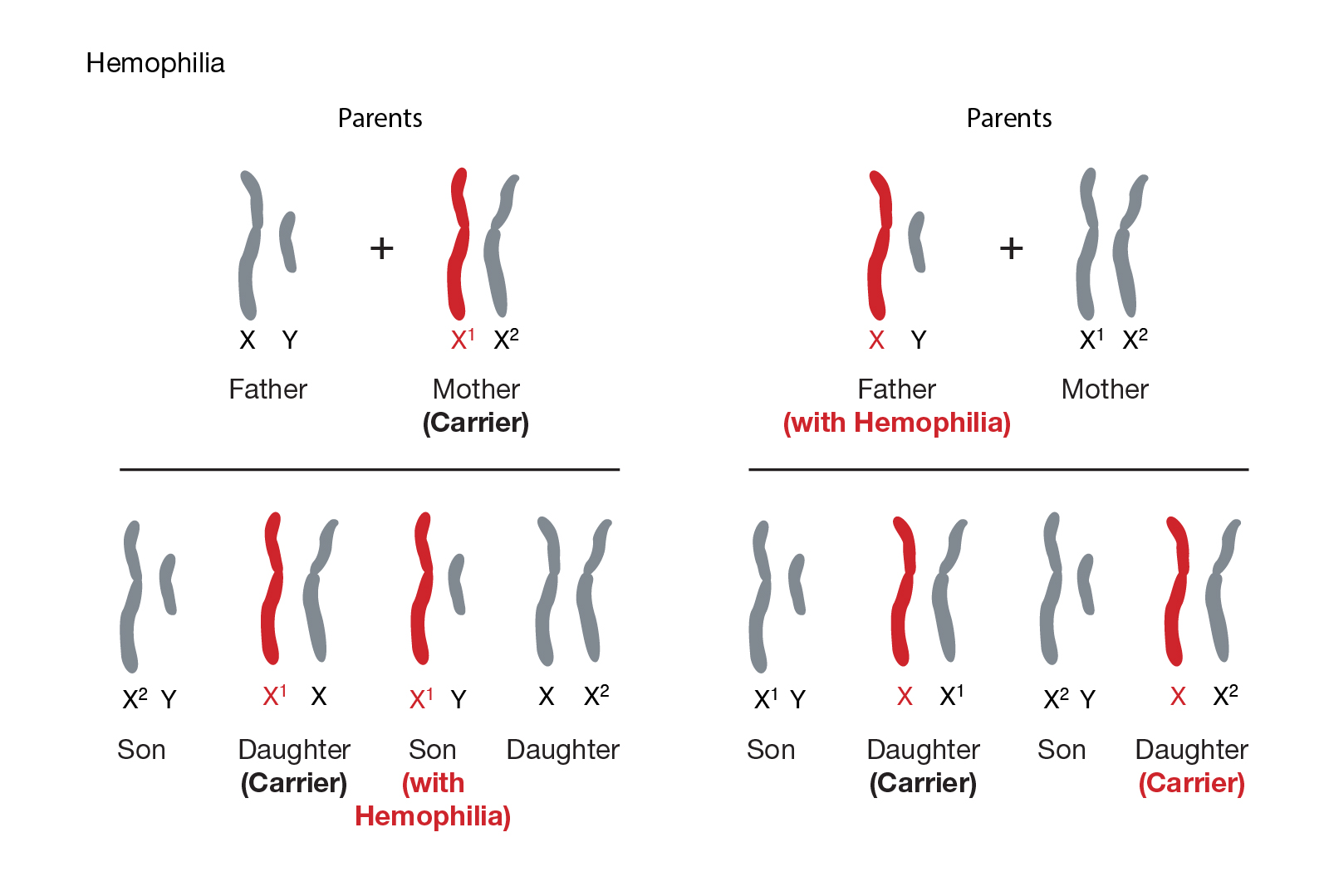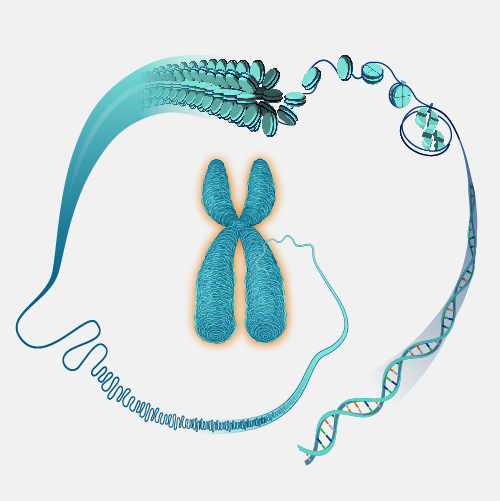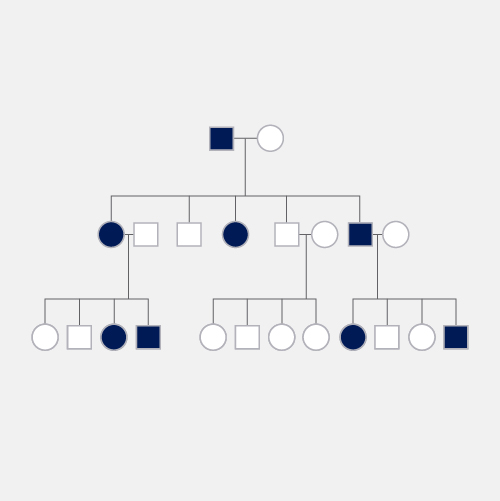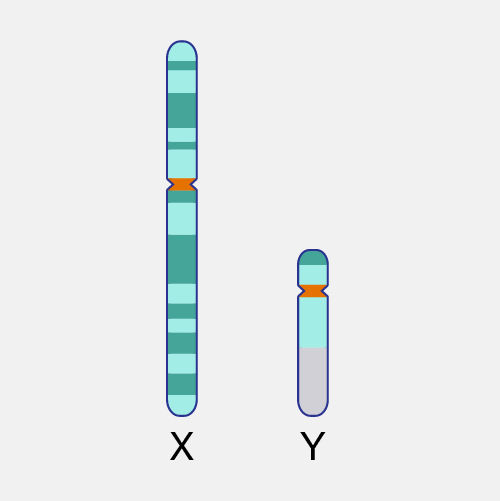Hemophilia
Definition
Hemophilia is an inherited disease, most commonly affecting males, that is characterized by a deficiency in blood clotting. The responsible gene is located on the X chromosome, and since males inherit only one copy of the X chromosome, if that chromosome carries the mutated gene then they will have the disease. Females have a second, usually normal, copy of the gene on their other X chromosome, so they capable of passing on the disease without experiencing its symptoms.

Narration
Hemophilia is an inherited disease that's characterized by bleeding beyond what would be expected in a normal individual. In other words, they have a deficiency in the ability to clot their blood. Often, we think of hemophilia [as] associated with males. In other words, there are many more males that have hemophilia than females. And the genetic basis of this... In order to understand that genetic basis is to understand the basis of gender as it's coded in our genome. So gender is encoded on a pair of chromosomes, the 23rd pair of chromosomes. For females there are two X chromosomes, and for males there are an X and a Y chromosome. The hemophilia gene, or coding for the specific blood-clotting factor, is actually found on the X chromosome. So if you think about it, women, or females, carry two copies of the hemophilia gene, and if it's changed, one of them is probably working. In males, if the one that's not working correctly is passed on to a boy, that boy has only one copy of the gene on his one X chromosome. His Y chromosome obviously doesn't carry the hemophilia gene, and so that non-working gene doesn't have anything to counterbalance it, and so the individual has hemophilia, or has problems with clotting.




